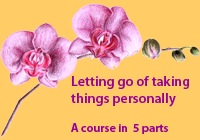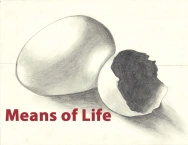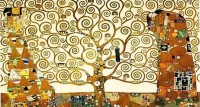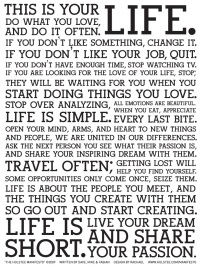 I came across the myth of Parsifal and could not help but notice the rich symbolism and metaphors. Parsifal is the story of a “fool’s journey”. A young man, so innocent and humble, that he does not even have a name has an experience of a inner mystical truth, a first touch of consciousness, but is not ready for it. After twenty years of searching the Holy Grail, many trials and tribulations, another chance is offered, and this time he succeeds in asking the right question that heals the ailing Fisher King (another profound metaphor for the wounds we have received in this lifetime and must heal).
I came across the myth of Parsifal and could not help but notice the rich symbolism and metaphors. Parsifal is the story of a “fool’s journey”. A young man, so innocent and humble, that he does not even have a name has an experience of a inner mystical truth, a first touch of consciousness, but is not ready for it. After twenty years of searching the Holy Grail, many trials and tribulations, another chance is offered, and this time he succeeds in asking the right question that heals the ailing Fisher King (another profound metaphor for the wounds we have received in this lifetime and must heal).
A myth is a living thing. It is giving us guidance when we need it, where we need it. The story of Parsifal is incredibly rich in pointers and guidance – it reads like the detailed instruction for the proper living and acceptance of the life’s journey, if one looks beyond the symbolic meaning of the protagonists and events of the story.
There is one subject in particular, that I started to really understand in it’s significance. It is about the relation we have to our inner life, and the development it takes over the course of the years and coming of age, as well as the many pitfalls and traps that can be avoided, when we listen to the right counsel.
So please follow me into this enquiry:
On his journey, Parsifal meets Blanche Fleur, a beautiful damsel in distress, and he rescues her life and her kingdom. She is his lady fair and the carrier of inspiration. He spends one night with her, but they sleep in chaste embrace, following the instruction of Parsifal’s godfather, who told him “to never seduce a fair maiden, or be seduced by her”.
Now, we are looking at a myth and have to understand the pure symbolism to unlock the message. This is not at all about a sexual interest, this is an instruction how to deal with the seduction of the inner world, which is feminine by nature.
The inner world, to yield and be perceptive, in touch with feelings is an intrinsic feminine quality. But what does that actually mean ? Feelings are the experience or perception of physical sensation, which also includes emotional states. Thus is the world of the feminine, the dark, mysterious, unreasonable, instinctual world of wayward feelings, and it stands in sharp contrast to the rational, razor-sharp logic of the male domaine of intellect and thought. This has nothing to do with gender, by the way – we are talking about the male and female energies inherent in both, men and women.
But there are not only feelings – there is also mood. A mood is like a thick and impenetrable fog, something arising from the background, blurring the feeling. Mood per definition is a prolonged emotional state. Is not an emotion, but it is rooted in it, so a mood means to follow a feeling or an emotion. It is one thing to perceive a physical sensation, but quite another to embark on it, and make the choice between feeling and mood, and engaging in one of these, there is no room for the other. To be still is a highly creative act. It is to be perceptive, not passive. Engaging in a mood however, prevents to follow a feeling.A mood prohibits true feeling, even tough a mood may appear to be feeling. A mood forfeits the ability to clearly see, feel or listen – and thus for true relationship (object or sentient beings) and true creativity. And this is what is meant by seducing – or being seduced – by the feminine principle.
To follow a mood prevents us from enthusiasm, from the Greek enthousiasmos “divine inspiration,” from enthousiazein “be inspired or possessed by a god, be rapt, be in ecstasy. Enthusiasm is what arises when we are creative, in direct communion with what is true in us – so not a mood, but true creativity, nurtured by feelings.
I have a sense there is quite a difference how men and women relate to their “feminine” energy of the interior life, based on cultural bias of gender, but also due to the energetic make up of their sex and it may very well be, that it is easier for a woman to relate to the world of feelings, emotions and inner truth. After all, inner wisdom – Sophia – is the feminine principle, so for a woman it does not come as a shock at least, that the inner experience of Truth has this inherent female quality to it. But also for women it may be a daunting task to overcome some of the emotional barriers, that serve as the basis for moods, and develop a mature relation to this energy, and not seduce, or be seduced by it.
“Man has only two alternatives for relating to his inner woman: either he rejects her and she turns against him in the form of bad moods and undermining seductions, or he accepts her and finds within a companion who walks through life with him, giving him warmth and strength. If a man falls under the spell of a mood, that is, if he misconstrues her as being “out there”, he loses his capacity for relationship. This is true, even tough it might be a “good mood”, or a “bad one”.
Creativity in a man is directly linked with his inner feminine capacity for growth and creation. Genius in a man is his interior feminine capacity to give birth; it is his masculinity which gives him capacity for putting that creativity into form and structure in the outer world.
Goethe in his masterpiece, “Faust”, came to the noble conclusion late in his life that it is the province of man to serve woman. He ends “Faust” with the lines “The Eternal Femininedraws us onward” – certainly a reference to the inner woman. To serve the Grail is to serve the inner woman.” (Robert A Johnson , excerpted from “He”)
In the myth of Parsifal and Blanche Fleur the correct relationship of man and inner woman is delineated. They are close to each other, each warms the other and makes life meaningful for the other; But there is no seduction.
And now back to Parsifal and his task of only needing to ask a question (he does not have to answer it). The reason for Parsifal to fail at his first encounter with the grail is that he did not understand yet, that to serve the Grail and the Grail King properly, one will find that what happens and happiness are the same thing. A play of words become the definition of enlightenment.
Suggested reading:















Dear Michaela,
First: Brilliant!!!!
Second, two days ago, in counseling a gay and a trained therapist to understand the real meaning of the demise of his relationship with a transgendered lover of 3 years, I told him of Parsifal. What a synchronicity!
Having read Bly’s book a number of years ago, and having worked so very hard to reach beyond the inner male resistance to exposing my inner feminine, your beautiful, tastety words feel as though a zen bell has been struck, calling me to the zendo.
I am deeply touched and moved. Gasho
Thank you, Jerome. I stumbled upon it and will enquire further. there is definitely something in the myth. Maybe I can entice you to write something about finding the the “inner feminine” ? I am planning to do this from an energetic standpoint, but it occurs to me, I only can write about it from a woman’s perspective – and I do think its different challenges and patterns. Its so much understood – and so critically important.
So maybe something for the brothers from a brother ?
Wow. The more I know the more I realize I don’t know. Hmmm. H for humility.
And great wisdom for understanding the mystery of ones own jigsaw
Thanks again Michaela
Hi Pete – I know…it’s a bottomless pit… I have given up, must be the inner feminine.. 😉
TY for sharing this Michaela. I believe I need to read it a few times more before though. 🙂
By the way..
If one is interested in mythology and symbolism I would suggest reading the works of Joseph Campbell; http://www.jcf.org/new/index.php
Thank you for the link, Raoef. Yes, you are right – Joseph Campbell seems to be a real authority on symbolism. Its fascinating. Thank you for the link – if you have any questions, ideas or observations – please bring it up…its a cool subject, and I have to admit, I am finding my way around it…so maybe we all can do this together.
I read the Hero with a thousand faces and his interview with Bill Moyers a long time ago. I think I can say that JC had a big influence on the way I am thinking and approach things.
A part of me wants to join you on your way. Fact is that I am busy enough as it is and a growing part of me just want to be silence.
Pingback: Creating Our Futures « creatingreciprocity